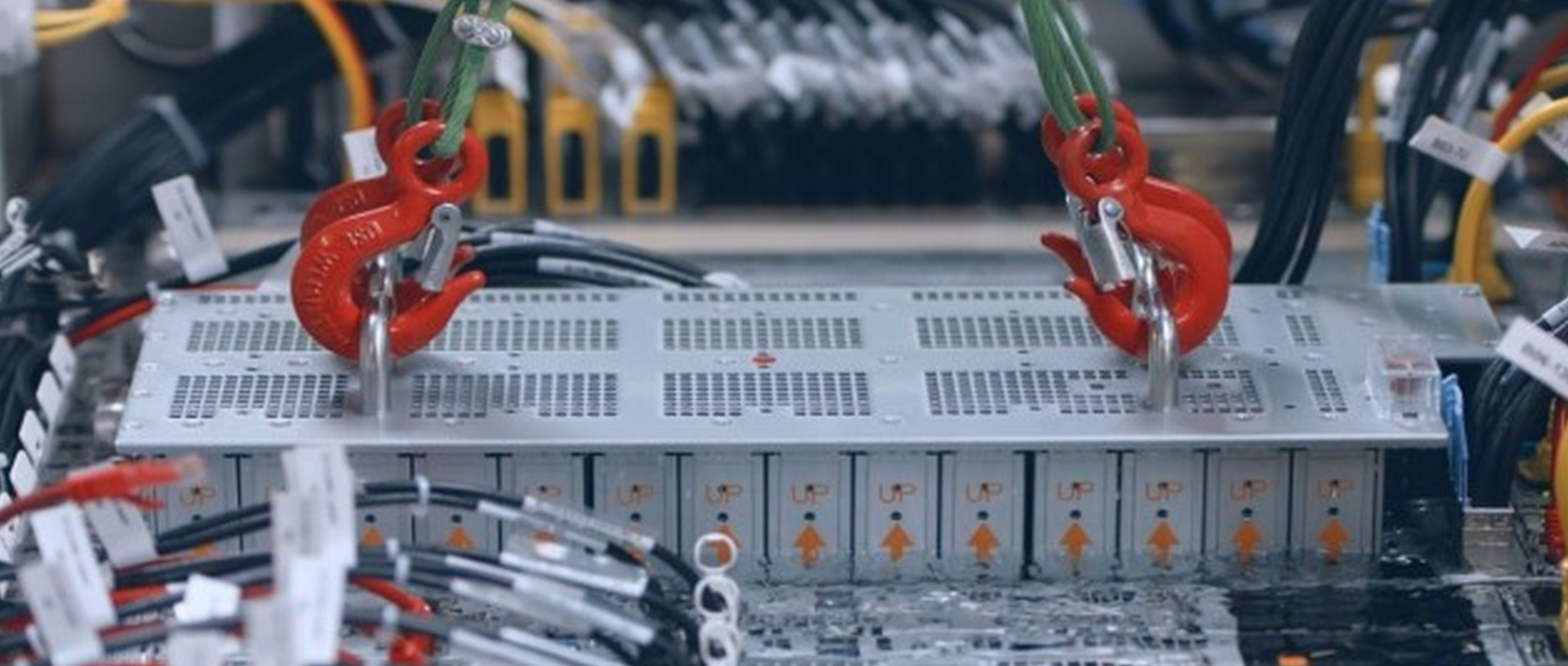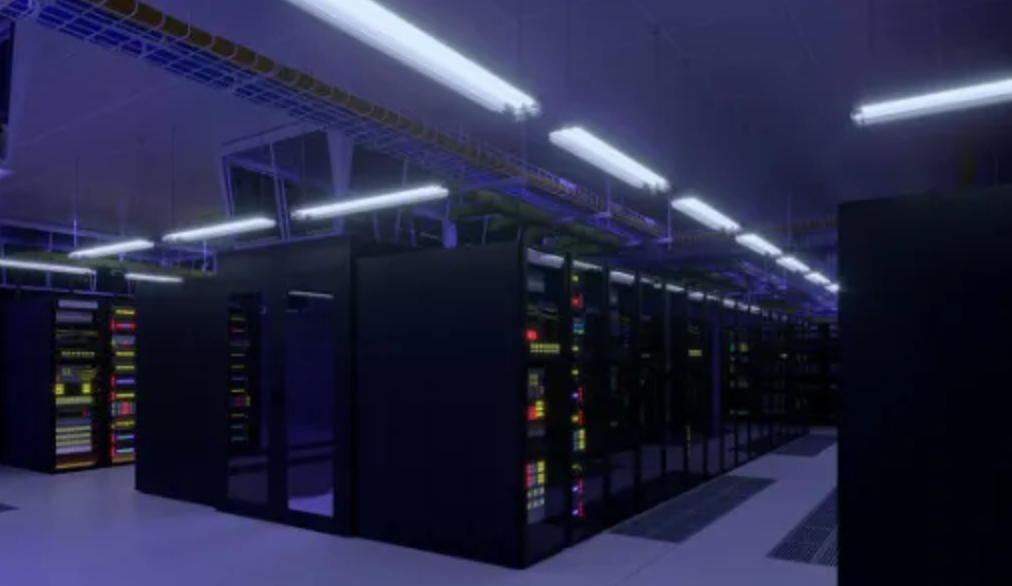
Recently, the Bank of China Securities Research reported that low-carbon, IDC“Liquid cooling era,” the outbreak of opportunity to come. Driven by technology, policy and demand, the one hundred billion levels of the liquid-cooled server industry are fast approaching an inflection point, with positive factors such as long-term replacement and new demand, the report said, welcome the strong driving force, is expected to quickly become the future growth flexibility, good certainty of the track.
With the explosive growth of the amount of data, a large amount of computing power requires massive servers to support, and is limited by data center construction area and environmental regulations, increasing the power density of a single cabinet is a key solution to reconcile the increasing computing power demand and limited data center capacity. Data Centers, the brains of emerging technologies such as artificial intelligence and big data, face unprecedented challenges in energy consumption and heat dissipation due to massive data throughput and computation.
在此背景下,应用液冷技术和液冷服务器等设备的液冷数据中心应运而生,为数据中心的冷却提供了新的解决思路。
数据中心规模迅速增长,超大型数据中心成热门。据中国通信院数据,近年我国数据中心规模稳步增长,按照标准机架 2.5KW 统计,2022年我国数据中心机架规模将达到670 万架,近五年CAGR 超过30%。其中,大型以上数据中心增长更为迅速,2022年底规模达 540万架,占比达 81%。同时,超大型数据中心逐渐占据主流,据赛迪研究院估计,2020年超大型数据中心服务器占比将升至50%以上,全球来看美国占据主要份额,我国超大型数据中心数量占比约为10.2%。
What is liquid cooling?
As the name suggests, liquid cooling is the use of cooling liquid contact heat source for cooling. Among them, because of the coolant and server contact heat transfer methods are divided into immersion, cold plate and spray these categories.
The traditional way of cooling the server is through the air to conduct heat exchange, this technical scheme well decouples the IT equipment and the cooling equipment, thus enables the refrigeration system form to realize the diversification, but because the air specific heat capacity is small, volume flow is limited by the size of the server air inlet, heat transfer capacity is limited. Naturally, in order to improve the efficiency of heat transfer, it is necessary to adopt higher specific heat capacity of heat transfer medium, larger contact heat transfer area, larger heat transfer volume flow scheme to improve the efficiency of refrigeration. From these three aspects, the use of full immersion heat transfer mode obviously has a higher heat transfer efficiency, which can achieve a better energy-saving effect. As a result, liquid-cooled technology has naturally entered the field of data centers.
The chip energy consumption density is high, the air-cooling is gradually weak, the liquid-cooling is imperative
The chip heat dissipation efficiency needs to be improved rapidly, and the air cooling can not meet the rapid growth of IDC heat dissipation needs. Major chipmakers such as AMD, Intel, and Nvidia are ramping up their Thermal design Power TDP (ThermalDesign Power) chips to provide better performance. At the same time, the GPU power density is generally much higher than the CPU, which also means that GPU cooling needs higher than the CPU.
AMD says the TDP for high-performance gpus will reach 700W by 2025. In addition, mainstream hpcs, represented by cloud games, already have a power density of 1kW/u, by 2025, the average power of a single cabinet in a global data center will reach 25KW, which is a serious challenge to the current conventional air-cooling technology. At present, the limit value of air-cooling technology is basically between 300W and 350W, which can not afford the future development of cooling power consumption. In the future, liquid cooling is the necessary choice to solve the problem of IDC heat dissipation. According to Intel, third-generation Xeon expandable processors are catalyzing liquid-cooled technology into its first years.
The liquid cooling technology has the high efficiency refrigeration effect, effectively promotes the server's use efficiency and the stability. Liquid cooling can remove up to 500W of heat from a processor that occupies an area of just 20mmx 30mm. The effect of liquid heat conduction and large specific heat capacity can ensure that the chip will not overheat in a certain range of overclocking. In addition, the liquid-cooled server can eliminate the differences in altitude, region and temperature, to ensure operational efficiency and performance, with the advantage of large-scale applications.

The industry accelerates the infiltration, promotes the outbreak inflection point
Data centers, which are carrying billions of data at high speed, constitute an important infrastructure of the digital society. Maintaining their normal and efficient operation is as important as maintaining water supply and power supply. As the“River” of data flow, data center shoulders the functions of data receiving, processing, storing and forwarding. Many enterprises swim and grow in this“River”, also for the sustainable development of the digital economy practice“Internal”.
Since China incorporated data centres into its new infrastructure, several local governments have included the construction of data centres in their local development plans. Under the favorable policy support, the data center industry accelerates the development. According to the“14th five-year” information and communication industry development plan, by 2025, the national data center computing power will reach 20203.3 times.
At the same time, data centres, as a recognized energy-intensive industry, also face significant challenges in reducing energy consumption. With the continuous growth of data center computing power, Green Low-carbon will be and has become one of the important basic principles of new data center development. In July, the Ministry of Industry and Information Technology (MIIT)2021 a three-year action plan for the development of new data centres (the 2021-20232023 states that in terms of energy efficiency, the PUE of new large data centres and above has dropped to below 1.3, cold and cold areas strive to reduce to 1.25.
Each year, local governments are given and distributed indicators of the province's total energy consumption and intensity. Data centers operate around the clock, determining the nature of their energy-guzzling behemoths. As a big energy user, the local development and Reform Commission should rely on energy consumption indicators to decide whether to build. As a result, PUE in data centres is both a grab bag for government and regulatory authorities and a focal point for IDC's builders as they scramble to “Rat race”.
At present, liquid cooling technology is the best technical means to solve the problem of“PUE” in data center. Liquid cooling is an inevitable result of the continuous innovation of refrigeration technology in data centers. Liquid is 25 times more capable of conducting heat than air, and the same volume of liquid carries nearly 3,000 times more heat than the same volume of air. In terms of power consumption, compared with air-cooling system, the liquid-cooling system can save 30 ~ 50% of electricity.
“Liquid cooling” is not new. Lu Tianwen, secretary-general of the China Electronic energy-saving Technology Association, said the technology was first tried in the 20th century on base stations for communications equipment; since then, on consumer-side game consoles, some players manually DIY off a number of“Liquid-cooled host”, mainly to help cooling. Some geeks, he says, put colorful lights on their liquid-cooled hosts, “Which is pretty cool.”.
But the system development and scale application of liquid cooling technology is after 2010. The rapid development of cloud computing services has led to the large-scale deployment of data centers. In addition to the pursuit of data center technology, the pursuit of green data center users, the rapid development of liquid-cooled technology. At present, the liquid-cooled technology has moved from small-scale validation to large-scale production, at the same time into the standardization stage.
Therefore, will promote the liquid-cooled server industry huge development dividend blowout. IDC market research shows that the global server market share of customized product purchases has reached more than 30% . According to a conservative calculation by SAIDI research institute, the market size of China's liquid-cooled data center in 2019 is 26.1 billion yuan, and an optimistic estimate is 35.1 billion yuan. In 2025, the market size of our liquid-cooled data center will break through 120 billion yuan, the industry growth rate remains above 30 per cent.
With the gradual increase of permeability, IDC liquid cooling is expected to quickly meet the inflection point of the outbreak.
In 2019, liquid-cooled IDC was mainly used in industries such as supercomputing, while the Internet, finance and telecommunications industries are experiencing rapid growth in business volume. It is estimated that liquid-cooled data centers will account for 24.0 percent of the internet industry in 2025, according to research by the Saidi Institute, financial Sector 25.0% , telecommunications 23.0% , energy 10.5% , biology, health care and government and other industries will accelerate the integration of the new general data center format. In addition, the communications industry is also in rapid deployment. There is no doubt that liquid-cooled data centers will accelerate the replacement of traditional air-cooled data centers. According to the Saidi Institute, the rate of liquid-cooled replacement was 20% in 2019 and gradually increased thereafter, with 25% of the technology expected to be replaced by 2025.





